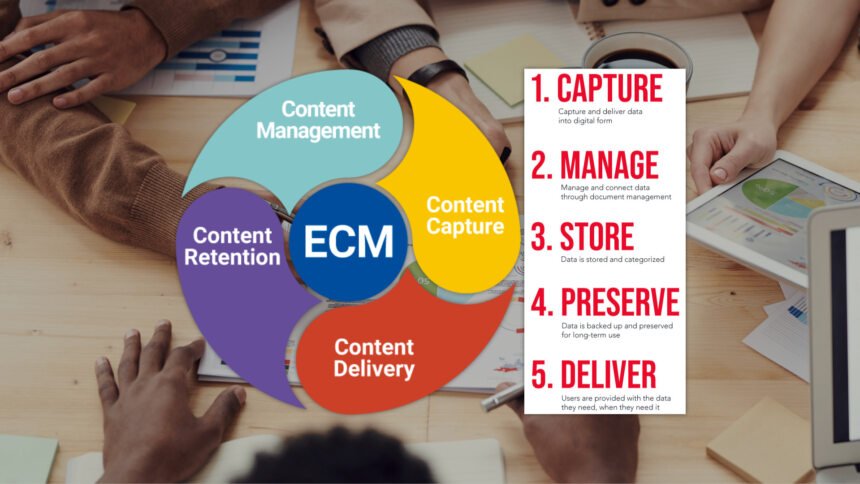Successful ECM Implementation
The world is rapidly moving towards a digital landscape where information and data have become vital assets for every enterprise. An effective Enterprise Content Management platform can help manage, organize, and distribute large volumes of content. Using ECM platforms can lead to improved collaboration, increased efficiency, and compliance with regulatory requirements.
However, to ensure a successful ECM implementation, organizations must follow critical steps that help avoid potential pitfalls and maximize the benefits of an ECM platform. This article will outline six essential steps organizations can follow to ensure a successful ECM implementation.
Step 1: Define Your Objectives
Before implementing an ECM platform, you must define your objectives and how you intend to use the system. This includes identifying the types of content you are managing, users who need access, and the workflows and processes involved. By defining your objectives, you can ensure your chosen ECM platform aligns with your organization’s goals and your objectives and requirements. This will also help you avoid unnecessary costs and ensure the implementation is completed within a reasonable timeframe.
Step 2: Select the Right Platform
ECM platforms are available in the market with unique features and capabilities. You should evaluate options based on your objectives and requirements to select the right platform for your organization. Consider factors such as scalability, flexibility, ease of use, integration capabilities, and ongoing development and updates.
Step 3: Plan the Implementation
Planning is crucial for a successful ECM implementation. It’s essential to involve all stakeholders in the planning process, including IT, content creators, and end-users, to ensure a smooth implementation and user adoption. This involves creating a detailed project plan that outlines the key milestones, timelines, and responsibilities of all stakeholders involved. The project plan should also include a risk assessment that identifies potential obstacles and how they will be addressed.
Step 4: Prepare Your Content
Before implementing an ECM platform, it’s essential to prepare your content to ensure that it can be easily migrated and integrated into the new system. This includes organizing and cleaning up your existing content, establishing content standards, and creating metadata and taxonomy. Identifying any legacy systems that may need to be decommissioned or integrated into the new enterprise content management platform is also essential. By preparing your content in advance, you can reduce the risk of data loss during migration and ensure that your content is easily accessible and usable in the new system.
Step 5: Train Your Users
User adoption is critical for the success of an ECM implementation. To ensure that your users can effectively use the new system, it’s essential to provide comprehensive training and support.
This includes training sessions, online resources, and user guides that cover all aspects of the ECM platform, from content creation to collaboration and distribution. It’s also important to provide ongoing support and communication to address any issues or concerns that users may have.
Step 6: Monitor and Refine
Once the ECM platform is implemented, monitoring its performance and refining it based on feedback and usage data is important. This includes tracking metrics such as user adoption, content usage, and system performance to identify areas for improvement and optimization.
It’s also essential to solicit feedback from users and stakeholders and use this to refine the system and improve its usability and effectiveness. By continuously monitoring and refining the ECM platform, you can ensure that it remains aligned with your organization’s objectives and delivers maximum value.
Conclusion
Implementing an enterprise content management platform can bring significant organizational benefits, including improved collaboration, increased efficiency, and better compliance. However, successful implementation requires careful planning and execution. Following these six critical steps, organizations can ensure a successful ECM implementation that delivers maximum value and benefits.








